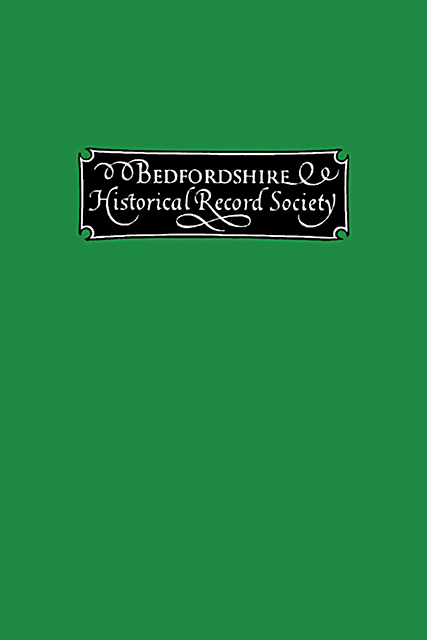The Origin of St. Mary’s Square, Bedford
Published online by Cambridge University Press: 18 July 2023
Summary
INTRODUCTION
The document here transcribed occurs in a miscellaneous register of the bishops of Lincoln known as the Red Book, most of which was written in the late 16th and early 17th centuries. It is an account of the relations between the two parishes of St. Peter Dunstable and St. Mary in Bedford, the demolition of the church in the former parish, and the uses to which the building materials and site were subsequently put. It appears to be evidence collected and produced in a case relating to the ownership of the site of St. Peter Dunstable, on which the Tuesday market was subsequently held. The evidence perhaps appears in the episcopal register because the bishop, as patron, was an interested party, but internal evidence suggests that the action was brought by the Corporation against the incumbent in the Court of Exchequer. The placing of the Tuesday market and of two new fairs granted at the same time is known to have been the cause of discord in Bedford between 1554 and 1557, when it was settled by arbitration.
The document is a return to the Exchequer made by John Neygott (or Maygott, as the name is more often spelt), parson of Bedford St. Mary. Neygott is apparently the John Maygott or Maget who in January 1538 was instituted to the united benefice of St. Peter Dunstable and St. Mary and who had proceeded B.A. from Magdalen College, Oxford, in 1518. He was a frequent preacher in churches in the neighbourhood of Bedford according to the visitation book of 1540. He appears to be answering an interrogatory with the following questions : (1) Who is patron of the two churches? (2) Was it right to pull down the church of St. Peter Dunstable? (3) Who consented to the pulling down? When he ceased to be incumbent is not certain; but at his death in 1564 or 1565 he was living at Carlton. He left many bequests to inhabitants of Bedford and of Carlton, and his executors were Edmond Greene, schoolmaster [of the Free School], and John Cowper, baker, both of Bedford.
- Type
- Chapter
- Information
- The Gostwicks of Willington and Other Studies , pp. 12 - 19Publisher: Boydell & BrewerFirst published in: 2023



